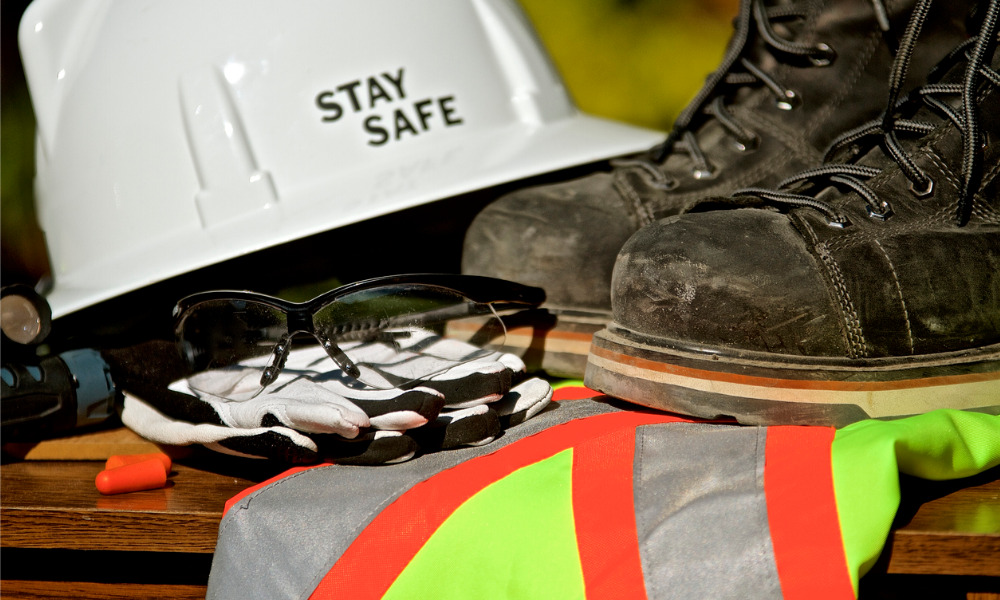A look at recent decisions shows that breaching safety rules is serious, but not always cause for dismissal

What is your company willing to do to ensure the workplace is safe? More importantly, what is it legally allowed to do?
When an employee violates an employer’s safety rules, of course something needs to be done. Misconduct on its own should be addressed with some form of discipline, but when the misconduct involves safety, the overall safety of the workplace and other employees has to be factored in as well. And that’s where not only the seriousness of the misconduct is in play, but the likelihood of it happening again is a significant consideration.
In any disciplinary situation, termination of employment is the most severe form of discipline, and a serious safety breach could serve as just cause for dismissal. But, as usual, it can depend on the circumstances, the nature of the breach, and whether the employee might do it again.
Recently, an Alberta arbitrator upheld the termination of a worker for breaching his employer’s lockout policy. The union argued for leniency because no one was hurt, but that was beside the point. The worker was experienced and knew what he was doing was wrong – he told his apprentice to stay away because it was dangerous – and didn’t acknowledge his wrongdoing during the employer’s investigation, which cast doubt on whether he had learned his lesson, said the arbitrator.
While safety is important, a breach of safety policy won’t always be grounds for dismissal or even extensive discipline, especially if the worker has a long service record and it can be reasonably assumed that the breach won’t be repeated.
Last year, a worker at an Ontario sawmill who had worked there for 45 years was suspended for two weeks after he failed to report a collision between the mobile machine he was operating and a garage door, causing $5,000 in damage to the doorframe. The sawmill’s policy required immediate reporting of incidents, but the supervisor wasn’t yet at work. Once confronted with the damage, the worker acknowledged it and said that he had intended to report it.
An arbitrator reduced the suspension to one week, finding that the worker’s lengthy good service and acceptance of responsibility made it unlikely that it would happen again. The suspension was halved to one week.
Just a warning
Sometimes a suspension isn’t required in the name of progressive discipline. A couple of years ago, a worker at an Ontario manufacturing plant with no prior discipline drove a small forklift down an aisle between pallets and nearly hit the plant manager. The plant manager told him that he hadn’t honked to warn people he was coming, and the worker said he had no proof. He also made a couple of disrespectful comments.
The employer suspended the worker for one day for acting “in a genuinely unsafe manner” and for insubordination, but an arbitrator reduced the discipline to a written warning, as per progressive discipline under the collective agreement.
However, an employee who repeatedly demonstrates an inability to work safely becomes a safety risk and termination may be appropriate. In 2015, a truck driver for a B.C.-based shipping company received a ticket for driving with a flat tire and he didn’t advise the company. The company found out about it and his logbooks revealed multiple safety violations – including not taking required breaks, allowing a passenger into a cargo facility without safety boots, tickets for speeding and logbook violations, and not producing log pages for a roadside inspection. The driver’s safety violations caused the company to lose its safety rating with the BC Ministry of Transportation and a top client.
He was fired for ignoring safety protocols and warnings over a short period of time and an adjudicator upheld the dismissal.
Multiple violations trump long service
A long period of service won’t save an employee’s job if the safety violation is serious enough. Several years ago, an industrial company in Ontario fired a worker with 37 years of service after two incidents in which he failed to wear PPE in the plant and be clean-shaven for an effective mask seal. The worker had seven other instances of discipline in the past year, including a 25-day suspension, of which some were for safety violations.
An arbitrator upheld the firing, saying that the worker’s multiple incidents of misconduct and the lack of a real apology showed that he was a safety risk and that “lengthy service by itself has less mitigation currency in health and safety misconduct cases than it has in other kinds of cases.”
Sometimes, safety requirements can come up against religious beliefs, as was demonstrated recently when more than 100 Sikh security guards were removed from their posts in Toronto because of the city’s requirement for all guards to be clean-shaven so they could wear tight-fitting facemasks. Sikhs maintain uncut hair as a tenet of their faith. The city says it directed its contractors to accommodate at Sikh employees, which is a requirement in any similar situation.
While safety is paramount, employers are legally required to investigate options to accommodate employees who, because of religious beliefs or other human rights-protected grounds, may not be able to adhere to safety protocols such as wearing certain PPE. While it’s not an option for such employees to work in dangerous areas without PPE, accommodations could involve finding other positions in other areas or different PPE options.
There may not always be a solution, but employers and employees have to at least try to find one to the point of undue hardship on the part of the employer.
Employers are required to ensure that the workplace and their employees are safe. But they are also required to deal with an employee who violates workplace safety within certain parameters. Safety is a top concern for employers, but termination of an unsafe employee may not always be the top solution.




